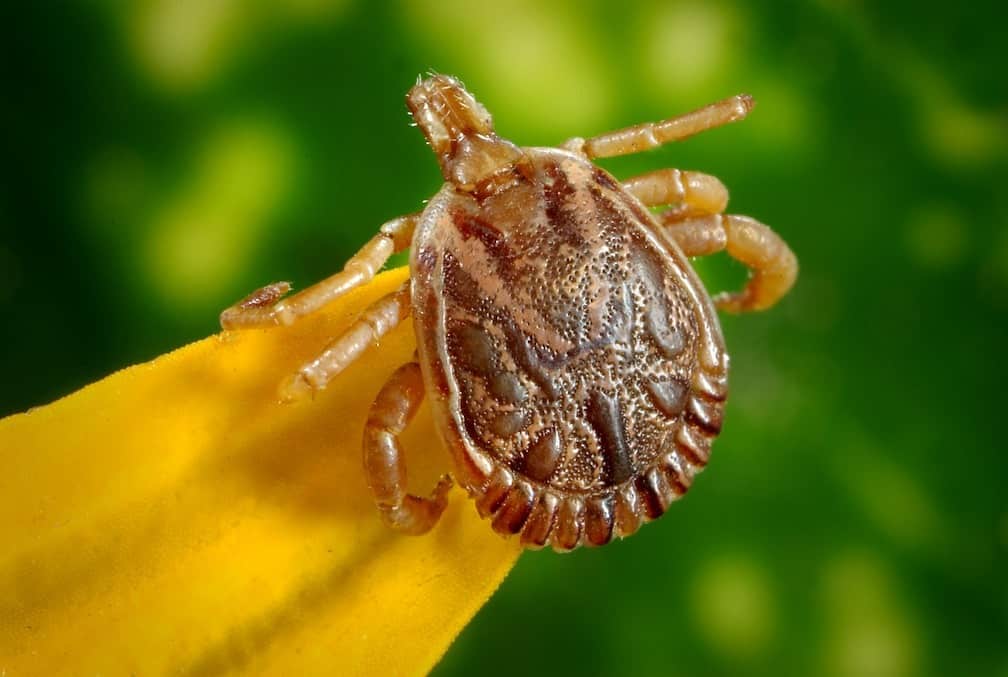When it comes to protecting yourself and the ones you love from tick-related diseases, it is important to understand the problems associated with ticks. Hopefully, this quick guide will help clarify any questions you have.
In Missouri, we have brown dog ticks, blacklegged ticks, American dog ticks, lone star ticks, and more. Brown dog ticks attack dogs and rarely attack humans. American dog ticks can target a wide range of creatures including dogs, mice, rats, cattle, deer, and even humans. Ticks that target humans may target them indirectly by coming into a home on a pet and establishing themselves in a location where people sleep or lounge. They can also target humans directly when individuals are outside.
Ticks can come into a home on dogs, cats, humans, and also rodents. If you're noticing ticks in your home and you don't have pets, it may be another furry animal bringing them in.
How to Prevent Ticks in Your Yard
- Ticks don’t like to be in the open. The best way to control ticks is to remove high grass, weeds, leaf litter and undergrowth from around your home.
- Keep your lawn well mowed below 3 inches to reduce humidity and habitable conditions for ticks. The shorter and more open your lawn is, the fewer ticks there will be.
- Garbage should also be kept in tightly sealed containers to prevent intrusions. Although ticks feed on blood, wildlife that may host them are attracted to trash.
- Pet food should not be left outside.
- Reduce deer feed, as a tick can be transported on deer or other animals. So make sure that your lawn is free of vegetation that deer would want to eat (such as azaleas, rhododendrons, arborvitae and crabapple) and increase the plants that they don’t like (such as Colorado blue spruce, Scotch pine, boxwood, daffodils and marigolds).
- Fence in your lawn. Reduce the amount of traffic of animals that could be carrying ticks into your “No Tick Zone.”
- Keep patio furniture out of vegetation. The closer you are to areas of moisture or non-open lawn, the higher your risk for contracting a tick is.
- Ticks can fly into your yard. Not on their own. They use birds as hosts. That means your bird feeders might be increasing the tick population in your yard.
- Ticks can be found around the perimeter of a home in shaded locations because this is where rodents and other wildlife hide. Pest control technicians apply products to these locations to reduce ticks. Because these locations are also where mosquitoes hide, this treatment works to reduce mosquitoes as well.
- Make sure all your pets have veterinarian prescribed tick control products. This will help to protect them from tick-related diseases and help to prevent them from bringing ticks inside your home.
- Professional treatment. If ticks are already a problem on your property, consider contacting a professional for tick control. While there are do-it-yourself methods available on the market, they may not be effective or if used improperly could be a risk to people and pets.
How to Prevent Tick Bites
- wearing light-colored clothing that covers the skin when in areas known to have ticks as their dark bodies will be much easier spotted on light-colored fabrics
- staying in the middle of trails rather than in the deeper wooded or tall grass areas
- using a repellent with a high level of DEET known to help ward off ticks
- keeping your pets protected with high quality tick treatments especially during the warmer months (these can be purchased at your local veterinarian office)
- checking all clothing, bodies, and your pets for any tick sightings after spending time outside
- mowing areas with tall grass or cleaning up un-landscaped areas to avoid hiding places for ticks
Be sure to check for ticks when you come back inside. It takes 24-48 hours for Lyme disease and some other tick diseases to transfer from an infected tick. Finding and removing ticks quickly can help to prevent illness.
How to Remove a Tick
- First, find a pair of clean, fine-tipped tweezers. Have rubbing alcohol standing nearby, along with a tightly sealed glass jar (baby food jars work well for this).
- Use the tweezers to firmly grasp the tick as close to the skin of the host as possible.
- Using a steady hand, slowly pull the tick upward and with even pressure. Do not twist the tick, or use quick and jerky movements; this could cause the tick’s mouthparts to break off inside the skin.
- Once you’ve removed the tick, DO NOT throw it away in your indoor trash. It will just crawl out and find a new host to feed upon. You can put it in a tightly sealed jar for future examination or you can kill it.
- Thoroughly clean the area with rubbing alcohol and make sure to wash your hands very well.
If you are in Missouri, be aware that Rottler Pest Solutions offers year-round pest control service that will protect your family from mice, rats, other wildlife, and ticks. We back our service with a 100% satisfaction guarantee. When it comes to protecting your family and pets from tick-related illness, you shouldn't settle for anything less.


